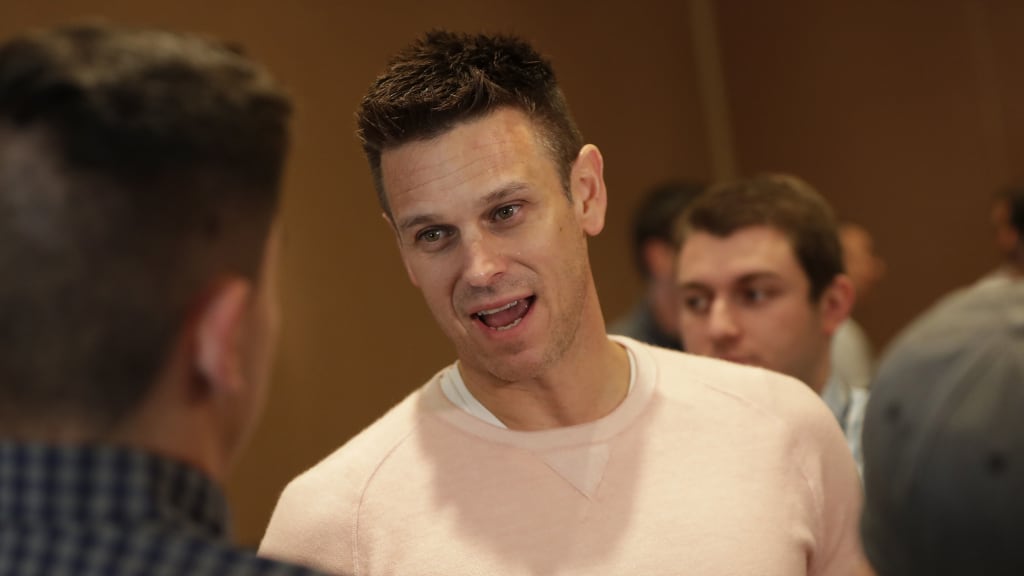
SEATTLE -- Mariners general manager Jerry Dipoto has said he expects to be rather quiet when baseball’s executives gather for the Winter Meetings, which run Monday through Thursday in San Diego.
Should we believe him?
This is coming from the guy who engineered a trade to acquire Edwin Encarnacion while dealing with blood clots in his lungs in a hospital bed at last year’s Winter Meetings in Las Vegas, after all. So what gives this year?
It’s not like Dipoto has put his itchy trigger finger on ice this winter. The club just dealt catcher Omar Narvaez to the Brewers on Thursday, previously acquired lefty Nestor Cortes Jr. from the Yankees and signed a trio of free agents in starter Kendall Graveman, reliever Carl Edwards Jr. and infielder Patrick Wisdom on top of claiming right-hander Phillips Valdez off waivers from the Rangers.
But Dipoto is largely sticking to his plan of staying more patient this offseason so the club can start moving more of its promising prospects into prominent roles and continue the rebuilding process.
Here’s a look at the Mariners' situation heading into the Winter Meetings:
Club needs: Dipoto says his position group is largely set, barring any trades. The main competition is expected to be at first base -- with rookie Evan White the leading candidate -- as well as for the fourth outfield spot and 26th man on the now-expanded rosters. But with those battles being waged likely by players already in the organization, what’s left to add?
Relief pitching stands as priority No. 1 -- preferably a veteran like the recently signed Edwards Jr. -- to bring some stability and experience to a young group. Dipoto also wants to sign another starting-pitching candidate for depth purposes, likely a versatile right-hander who could also be used in relief or as a “bulk innings” candidate behind an opener should rookie Justin Dunn step up and grab the fifth starter spot.
Whom might they trade? The primary trade chip was Narvaez, since the club had depth at catcher with the emergence of Tom Murphy and Austin Nola. So who’s left on the block?
Dee Gordon could be dealt since the Mariners have young Shed Long waiting in the wings, but Gordon is set to make $13.8 million in the final guaranteed year on his contract, and there isn’t a big trade market for second basemen. There has also been speculation of moving right fielder Mitch Haniger, but that seems less likely now that Domingo Santana was non-tendered on Monday.
Prospects to know: The Mariners’ farm system would have a lot more promising prospects to deal this winter, if they wanted. But Dipoto has worked hard to build up that group and isn’t looking to trade youngsters at this point. That’s not to say he wouldn’t swap prospects for other prospects who fit better in the long-term plan, but the top group seems pretty secure for now.
Rule 5 Draft: The Mariners will have the sixth pick in Thursday’s Rule 5 Draft and fully expect to use it, most likely on a reliever with upside. Dipoto has two spots open on his 40-man roster, so space is not an issue. Seattle could jump at the chance to grab Dodgers right-hander Jordan Sheffield, if he’s still available. The 24-year-old brother of Mariners starter Justus Sheffield is a former supplemental first-round Draft pick out of Vanderbilt.
Nationals right-hander Sterling Sharp, an athletic 24-year-old who pitched Double-A ball last year after returning from an oblique injury, might be another name to watch, along with Red Sox right-hander Eduard Bazardo, a 24-year-old out of Venezuela who had a big year in Double-A.
Payroll summary: The Mariners have shed most of their long-term contracts over the past year. With Félix Hernández and his $27 million-a-year deal now expired and Robinson Canó and others traded away, the only big commitments left on the books are Kyle Seager ($19 million in 2020), Yusei Kikuchi ($16 million) and Gordon ($13.8 million).
The payroll for the current 40-man roster projects to about $80 million, about half where it stood the previous four years. Dipoto doesn’t plan to spend big in free agency this go-around and lock himself back into long-term contracts, rather preferring to hold his cards until his young nucleus matures in the next year or two. Then expect him to maximize his payroll flexibility by adding key pieces in the right places for a legitimate title push when the time is right.
One question: Why not trade Seager, too?
After getting most of the long-term deals off the books, Seager is the one remaining holdover inherited by Dipoto. The 32-year-old third baseman has two guaranteed years remaining on the seven-year extension he signed in 2014, with $19 million owed this year and $18 million in ’21. Seager also has a $15 million team option for ’22, and that option becomes a player option if he’s traded, which means any team taking him at this point is locked in for three more years at $52 million.
The Mariners could eat some of that salary and try to trade Seager, but the guaranteed third year is a stumbling block. And while he had a solid second half last year after recovering from a torn tendon in his right hand, Seager’s trade value would likely be limited. It makes more sense to keep him as a veteran leader on a young team for a franchise that doesn’t have any top third-base prospects in its upper Minor League levels.


